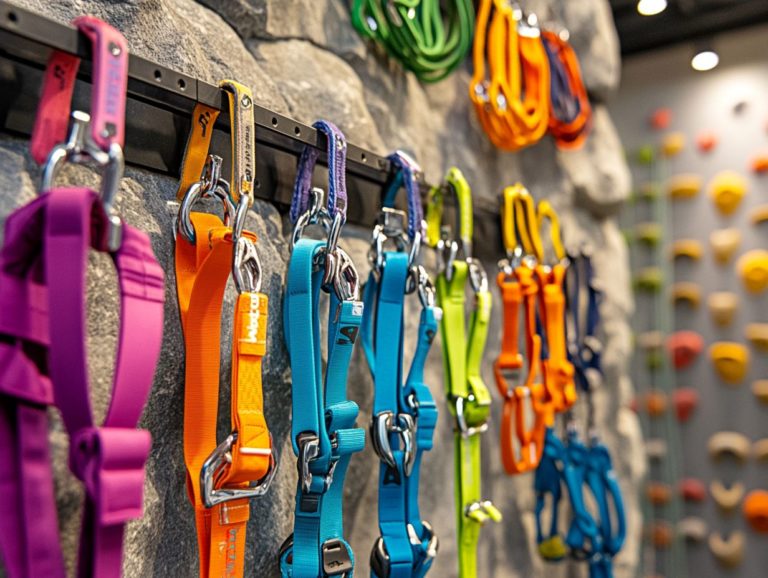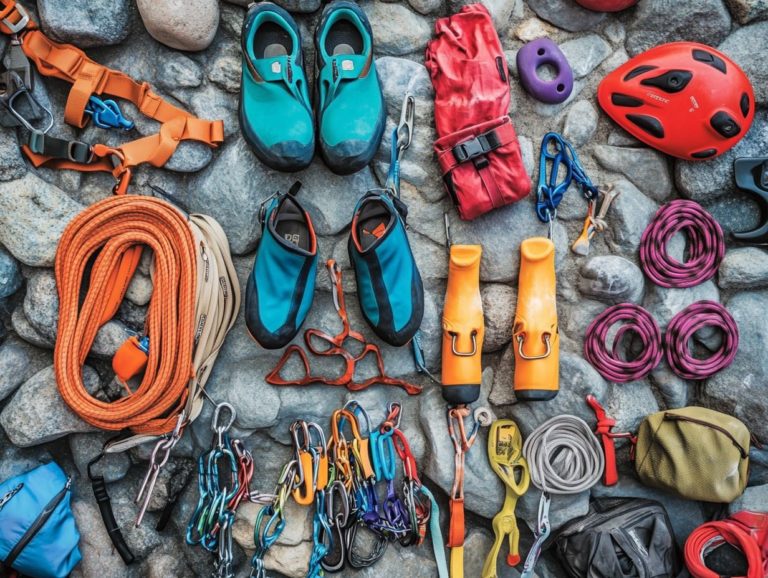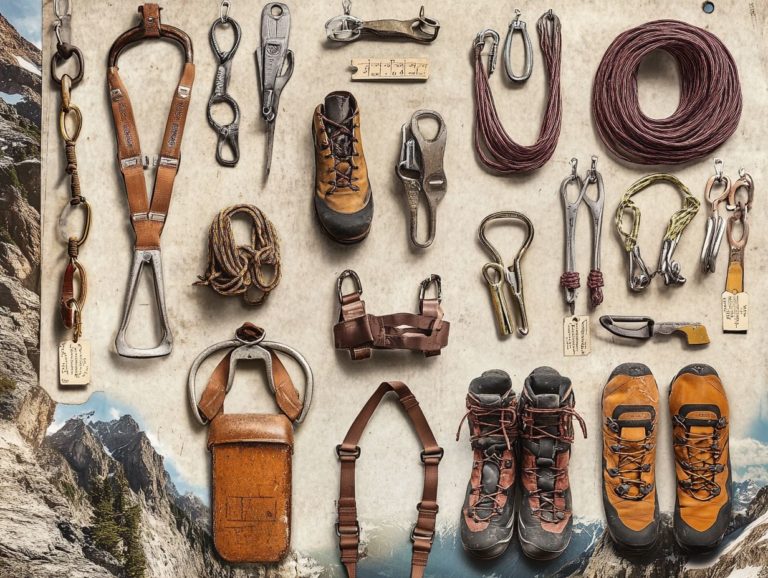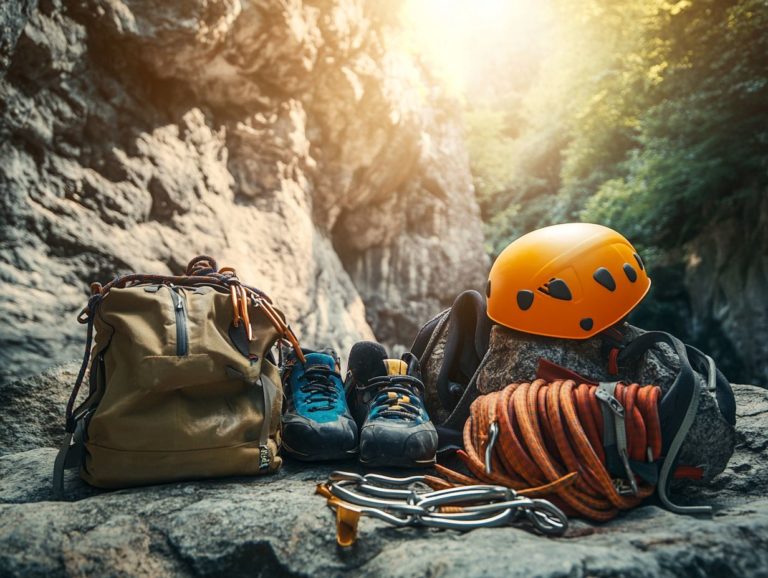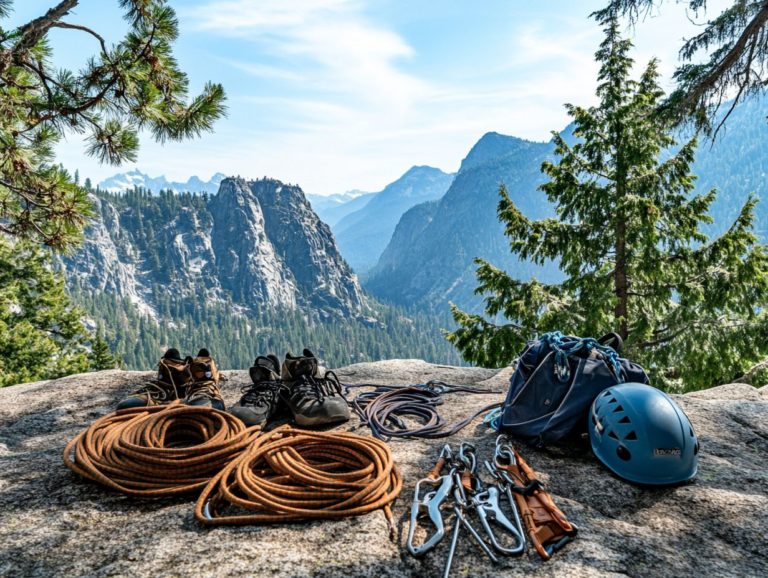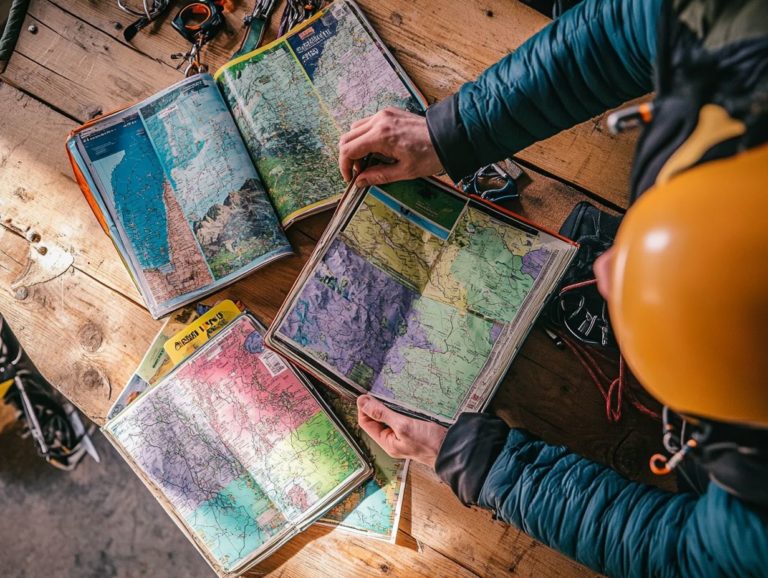What is the Best Gear for Solo Climbers?
Solo climbing presents you with a captivating blend of challenge and adventure. It offers a rare opportunity to immerse yourself in nature while testing your personal limits, all without a partner.
Embarking on this journey demands meticulous preparation and the right gear to ensure both safety and success. Essential equipment comprises ropes, anchors, and protective gear specifically designed for solo climbers.
Selecting gear that matches your climbing style is essential for an exhilarating adventure! Keep in mind vital safety tips and address both the mental and environmental aspects that come with climbing alone.
Whether you re a seasoned climber or just beginning your journey, this guide will equip you for your next ascent.
Contents
- Key Takeaways:
- Essential Gear for Solo Climbers
- Choosing the Right Gear for Your Solo Climbing Style
- Safety Tips for Solo Climbing
- Other Considerations for Solo Climbing
- Frequently Asked Questions
- What is the Best Gear for Solo Climbers?
- Do I need a specialized harness for solo climbing?
- Why is a personal anchor system important for solo climbing?
- What type of ropes should I use for solo climbing?
- Is it necessary to have a backup system when solo climbing?
- Can I use regular carabiners for solo climbing?
Key Takeaways:
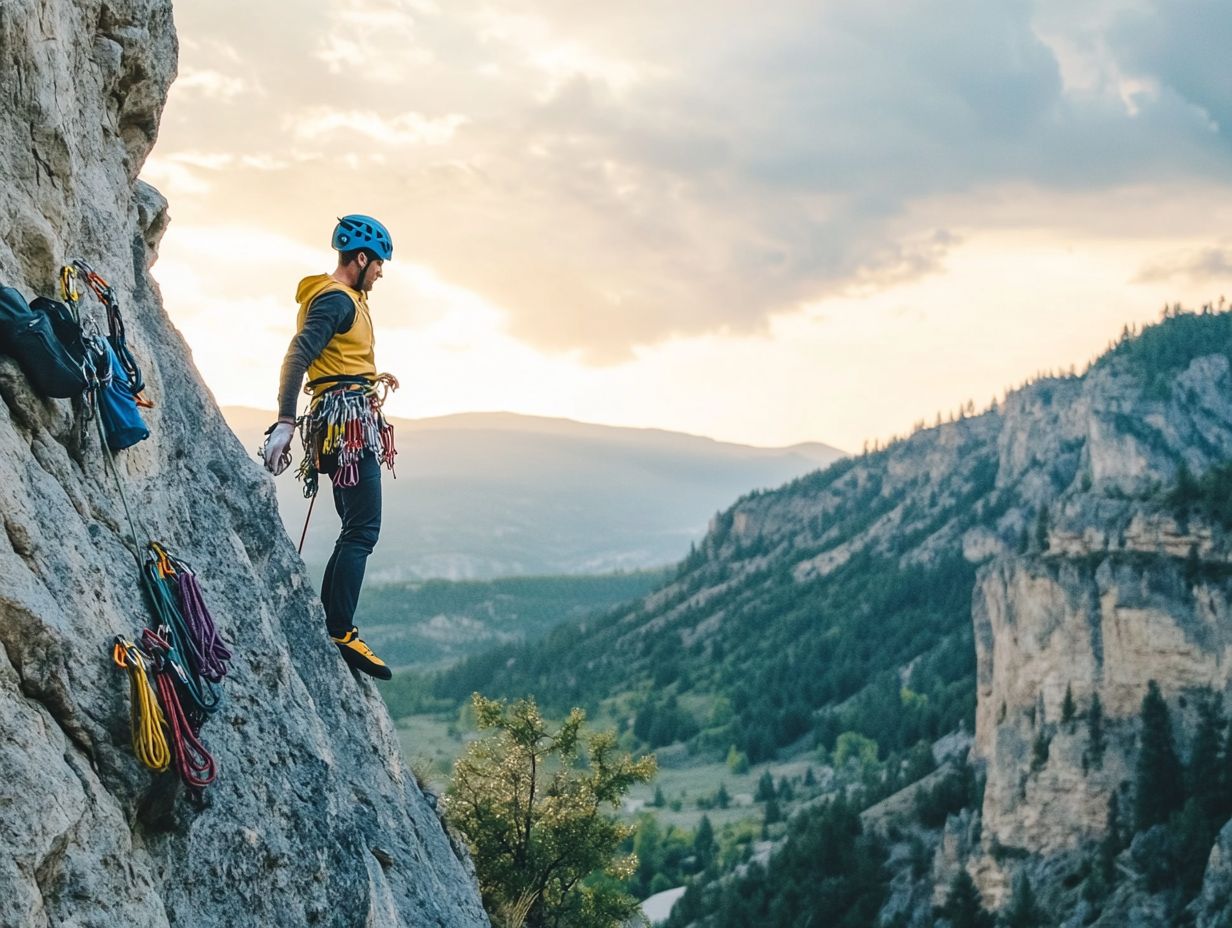
- Solo climbing requires essential gear such as ropes, anchors, protective gear, and navigation tools to ensure safety and success.
- Choosing the right gear for your climbing style is crucial, considering factors such as difficulty level and terrain.
- Safety should always be the top priority for solo climbers, including proper preparation, training, and emergency protocols.
What is Solo Climbing?
Solo climbing is a unique and increasingly popular approach that allows you to tackle routes without the assistance of a partner. This method engages you in a highly independent experience, where you must rely on your skills, technical knowledge, and an array of specialized gear to ensure your safety and success.
Just as many solo sailors and double-handed sailors are discovering, mastering the art of climbing a mast can be both exhilarating and rewarding, demanding both mental and physical fortitude.
This climbing style attracts a diverse group of adventurers, from seasoned veterans sharpening their skills to eager novices testing their limits in a more personal setting. As a solo climber, you may adopt various techniques, such as free soloing and solo top-roping, each offering distinct thrills while posing unique risks.
The fundamental benefit of solo climbing lies in the profound freedom it provides. You can choose your route, pace, and timing without needing to coordinate with a partner. However, this freedom comes with challenges; you must be acutely aware of your surroundings, practice diligent safety measures, and cultivate strong mental resilience to navigate both the heights and the potential isolation that comes with the climb.
Essential Gear for Solo Climbers
Selecting the appropriate gear is crucial for solo climbers, as it directly influences both your safety and performance.
Essential climbing equipment encompasses durable ropes, braking devices, and an array of climbing devices tailored to various solo climbing techniques. High-quality harnesses and Bosun s chairs, such as the Lalizas Bosun s Chair, provide comfort during long ascents.
Devices like the DMM Women s Vixen and Petzl Gri Gri + deliver vital safety features that every climber should prioritize.
Ropes and Anchors
Ropes and anchors are the backbone of your climbing operations, particularly in solo climbing scenarios where the stakes are significantly higher. Investing in durable ropes that can withstand the demands of climbing, paired with advanced climbing technology, provides you with the safety and security needed for your adventures.
By utilizing systems like fixed single strand and fixed double strand configurations, you can trust your gear while tackling challenging routes. Understanding the different types of ropes static and dynamic is essential for you as a solo climber, as each serves distinct purposes depending on the situation at hand.
Dynamic ropes, which stretch under load, are ideal for absorbing the impact of falls, while static ropes are excellent for securing gear and anchor points. Anchors also play a crucial role in your climbing safety, whether you opt for traditional gear like nuts and cams or modern quickdraws that adapt seamlessly to various terrains.
The choice of anchor systems, whether top anchors or bottom belays, can significantly impact your safety and performance. Therefore, it s crucial for you to familiarize yourself with the best practices in climbing technology to ensure a successful and secure climbing experience.
Protective Gear
Protective gear is essential for your safety as a solo climber. You need to prioritize your security at every stage of your ascent.
Investing in well-fitted helmets from brands like Petzl or Black Diamond can safeguard you against falling debris while ensuring you have the visibility and ventilation you need.
In terms of your footing, choosing climbing shoes from La Sportiva or Scarpa can greatly enhance your grip and support, which is crucial for navigating challenging routes.
Don t overlook the benefits of climbing gloves either. They can prevent abrasions and improve your friction on the rock. If you’re bouldering, a reliable crash pad from companies like Moon or Mad Rock is essential for cushioning falls, providing an extra layer of protection.
Each piece of gear plays its part, working together to create a safer climbing experience for you.
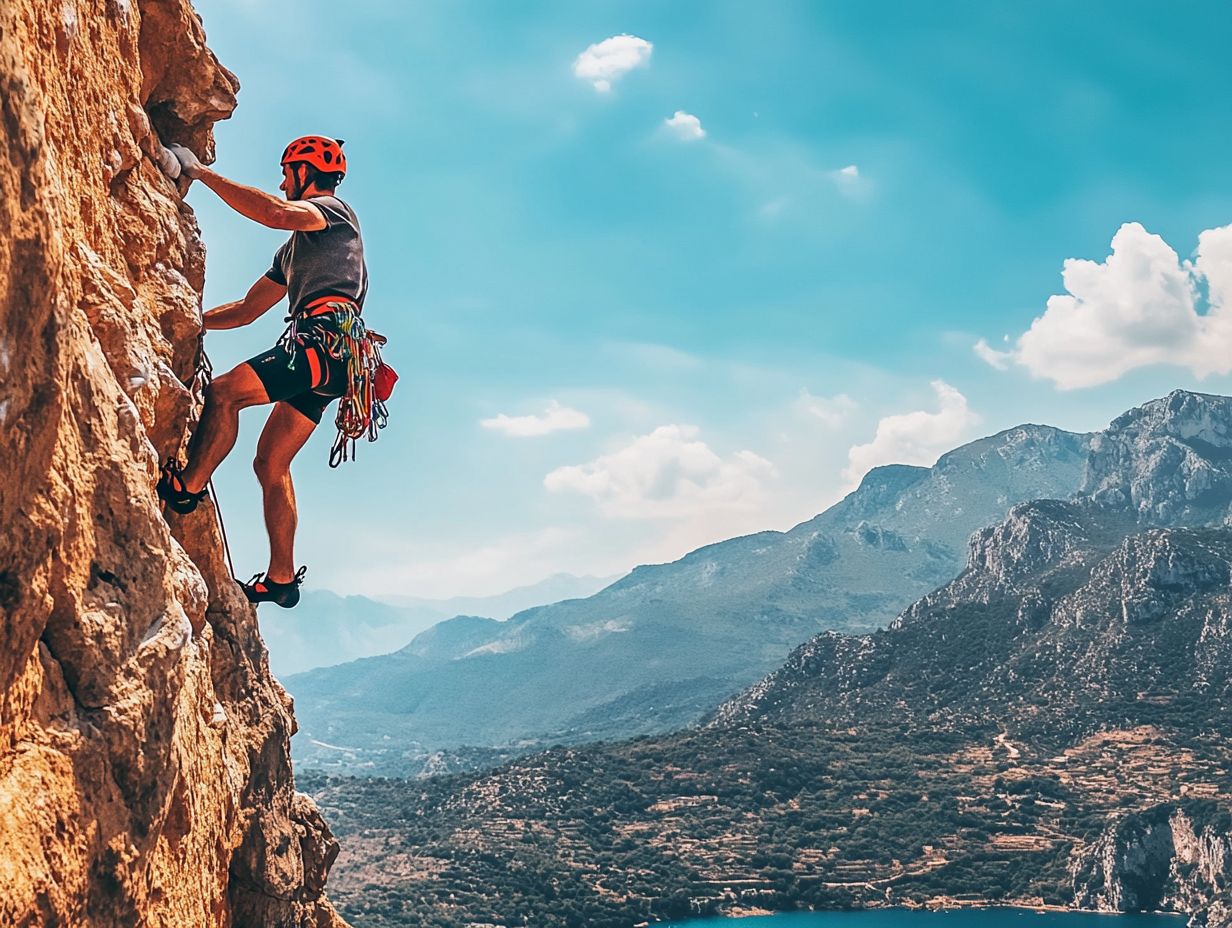
Effective navigation is essential for you as a solo climber. Being aware of your surroundings and route options is crucial for a successful ascent.
By utilizing advanced navigation tools, you can make informed decisions that enhance your safety and minimize your impact on the environment. A step-by-step guide to navigating climbing routes can significantly aid you in maintaining awareness and achieving your climbing goals.
Consider employing a variety of tools for effective navigation. Topographic maps, GPS devices, and specialized outdoor mobile apps can be invaluable in assessing terrain features and identifying potential hazards. This allows for smarter route selection.
Adding a compass to your toolkit enhances your spatial awareness, giving you the power to orient yourself even when technology falters. Understanding how to read natural indicators, such as the sun s position or the flow of water, adds another layer of insight to your navigation skills.
This comprehensive approach combines technology with traditional methods, equipping you with the confidence to explore challenging landscapes safely.
Choosing the Right Gear for Your Solo Climbing Style
Selecting the right gear is key. Understand your climbing style and the challenges it presents for optimal safety and performance.
A well-crafted buyer’s guide can be invaluable in helping you choose the most suitable equipment, ranging from lightweight harnesses to robust ropes designed for different solo climbing techniques.
By carefully evaluating your options, you can make informed decisions that prioritize safety, comfort, and overall effectiveness in your climbing endeavors.
Factors to Consider
When selecting gear for solo climbing, carefully think about several factors to ensure safety and performance. Evaluate the suitability of your climbing equipment, paying close attention to adjustable harnesses and essential safety features like tool pockets.
Understanding the importance of climbing safety is paramount. The right gear can truly make all the difference during your ascents and descents.
Finding the right balance between comfort and functionality is crucial in your decision-making process. For instance, opting for lightweight, breathable materials enhances your mobility while reducing fatigue.
This allows you to maintain focus on challenging routes. Including multi-functional tools and durable carabiners is essential, as they streamline operations and maximize efficiency.
It s also vital to consider weather conditions and terrain. These factors may dictate specific gear requirements, ultimately bolstering your safety and enriching your overall climbing experience.
Safety Tips for Solo Climbing
Your safety is paramount when exploring challenging terrains. Take these tips seriously to protect yourself!
Proper preparation and heightened awareness are your best defenses against potential accidents. By engaging in thorough training, you equip yourself with the skills necessary to manage risks effectively.
Familiarity with various solo climbing methods, combined with well-structured emergency protocols, ensures that you are ready to tackle any unexpected situations that may arise.
Preparation and Training
Preparation and training are crucial for a successful solo climbing adventure. They provide the skills and knowledge needed to face challenges.
Engage in targeted training to refine your climbing methods. Familiarizing yourself with climbing safety protocols can greatly reduce risks while climbing alone.
This preparation needs both physical and mental conditioning. Invest in proper gear, including climbing equipment, harnesses, and Bosun s chairs.
Strength is built through consistent training. Focus on using tools like the Grivel Mega K6N for improved performance.
Understanding effective techniques is key. Learn route planning to ensure a well-prepared ascent with the right climbing gear from GoOutdoors.co.uk.
Proficiency in self-rescue methods can save lives. Techniques like the clove hitch and figure 8 are essential for climbing safety.
Additionally, being aware of equipment usage, particularly the importance of using durable ropes and reliable climbing gear from well-known stores, will help you respond swiftly to emergencies.
Understanding weather patterns that affect your climbing journey is essential. Environmental factors, such as the impact of climbing a mast and its associated risks, should also be taken into account.
By understanding and preparing for challenges, you can enhance your safety and enjoy a more rewarding solo climbing experience.
Emergency Protocols
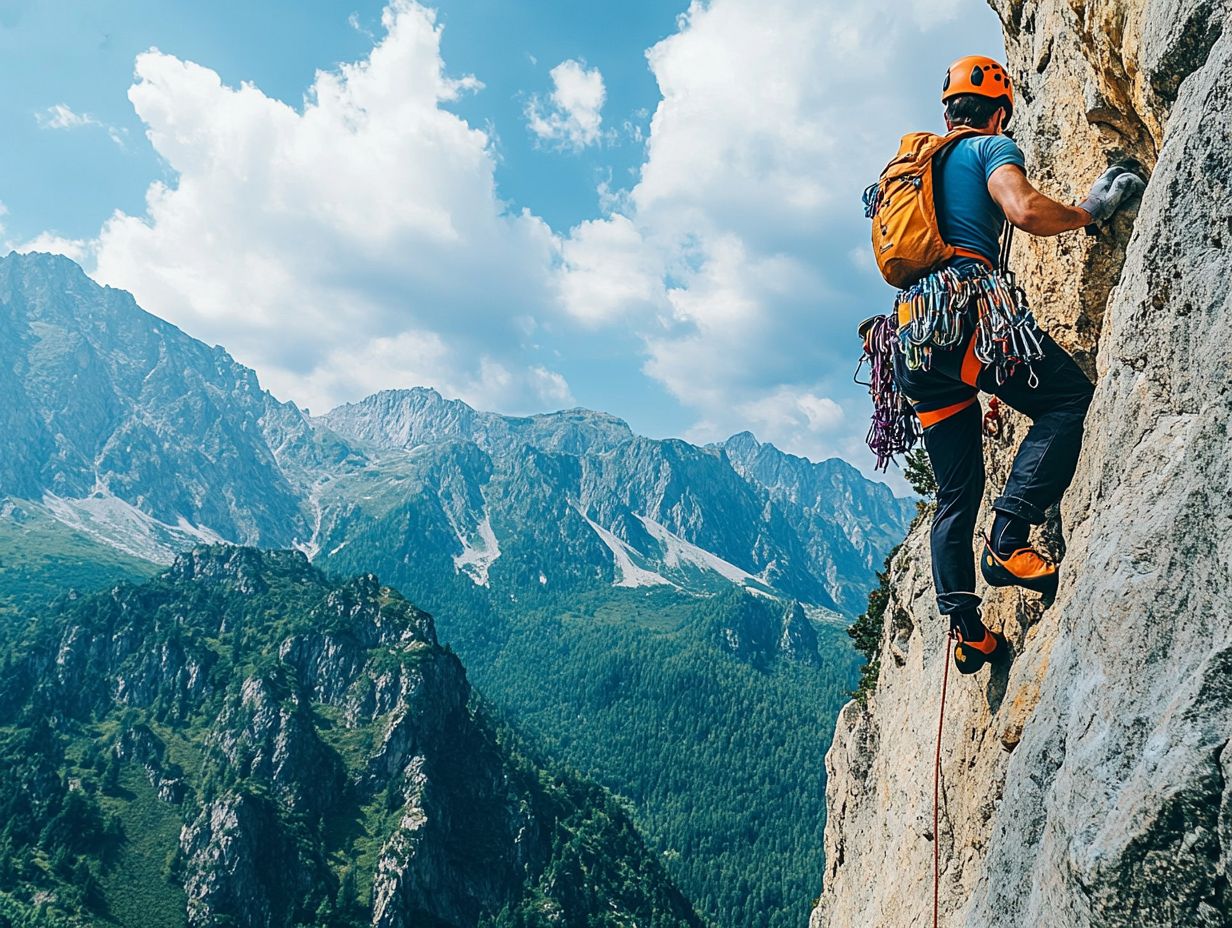
Emergency protocols are vital in solo climbing. Unexpected challenges can arise without a partner’s support.
Familiarize yourself with safety tools and solo climbing techniques. Establishing clear emergency protocols enhances your overall safety.
Develop a comprehensive communication plan using reliable two-way radios or satellite devices for remote areas.
Learn self-rescue techniques to respond to falls and equipment failures effectively. Being proficient in using nylon slings can help you make quick adjustments.
It’s also wise to inform someone about your climbing plan, schedule, and expected return time. This creates a safety net for unforeseen circumstances.
By ensuring thorough preparation, you can increase your chances of a safe ascent. Enjoy a more rewarding experience in the great outdoors.
Other Considerations for Solo Climbing
Solo climbing brings a distinct set of mental and physical challenges that you must navigate to achieve success on your own terms. As you ascend, you ll encounter intense mental stress. You can alleviate this by practicing solo climbing methods that promote mental fortitude through meditation. This practice helps climbers maintain focus and manage their overall climbing experience. Additionally, a focus on climbing safety is crucial, requiring self-reliance and resilience.
Self-reliance can be greatly improved by adapting various climbing techniques to suit personal needs. Resilience is bolstered through regular training with equipment, like the DMM Women s Vixen, which enhances comfort. Simultaneously, you ll face physical demands that can be effectively managed with adjustable harnesses and gear loops for easy access to necessary tools during your climb. It s essential to understand the environmental impact of your activities; maintaining a balance between your passion for climbing and your responsibility to the planet is crucial for a fulfilling experience.
Mental and Physical Challenges
The mental and physical challenges of solo climbing can be significant, requiring a high level of personal discipline. This can be achieved by following a step-by-step guide for preparation and training. You ll need to navigate psychological hurdles, which can be tackled using visualization techniques that include comfortable gear for lengthy climbs. Fear can be diminished by thorough preparation and employing effective climbing gear. Self-doubt can often be overcome by practicing with climbing devices to build confidence.
Mastering solo climbing techniques calls for not just skill but also mental fortitude to push through inevitable adversities. Inadequate mental preparation can lead to precarious situations, where you might misjudge your capabilities, amplifying the risks of climbing without a partner. This solitary endeavor compels you to develop comprehensive safety protocols, including training with climbing gear from Decathlon or Amazon.co.uk. Emphasizing the critical importance of route planning and equipment checks combined with knowledge of mechanical brakes ensures safety.
Rigorous physical training will enhance your endurance and strength, ensuring that each ascent is both efficient and safe. Successful solo climbers often adopt techniques like visualization and meditation to sharpen their focus and cultivate a calm mindset. Effective mental preparation is vital for navigating the complexities and potential dangers of ascending cliffs on your own.
In summary, the key challenges of solo climbing include managing mental stress, building resilience, and developing effective safety protocols. By focusing on thorough preparation, comfortable gear, and regular training, you can tackle these obstacles and enjoy the thrill of climbing solo!
So gear up and start your climbing journey today! Embrace the excitement and challenges ahead!
Environmental Impact
Understanding the environmental impact of your climbing activities is essential if you wish to preserve the natural spaces that climbers must respect. This ensures sustainable practices that incorporate eco-friendly gear and tools for climbing, such as rope bags and climbing technology, contributing to a responsible climbing experience and helping to protect fragile terrains. You love these environments, and it’s crucial to adopt sustainable practices that minimize your footprint while embracing climbing safety techniques that show respect for the environment.
By being mindful of your actions, you can help ensure that the beauty of nature remains intact for future generations. This awareness not only deepens your connection to the landscapes you explore but also encourages a culture of conservation among your peers.
Engage in local conservation efforts and educate yourself about the flora and fauna, which are essential components of the ecosystems climbers engage with and strive to protect. These actions give you the power to be a steward of the earth.
Implementing measures such as Leave No Trace principles, opting for eco-friendly gear, and avoiding fragile terrains can significantly reduce damage to delicate ecosystems. Ultimately, embracing these responsible practices transforms solo climbing from just an exhilarating personal challenge into a commitment to protecting the majestic environments you cherish.
Frequently Asked Questions
What is the Best Gear for Solo Climbers?
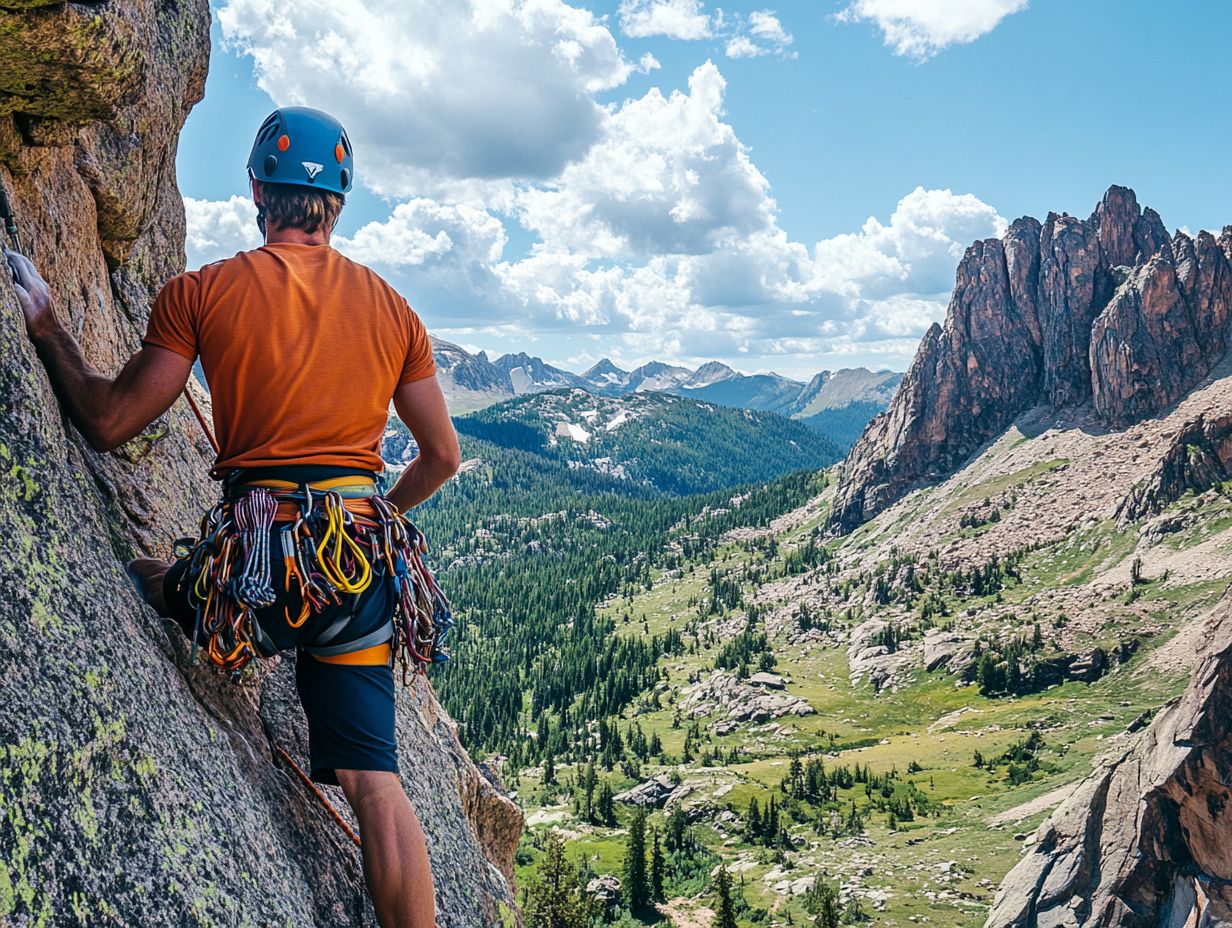
The best gear for solo climbers includes a climbing harness, ropes, carabiners, and a personal anchor system (PAS), which allows you to safely clip into anchor points.
Do I need a specialized harness for solo climbing?
Yes, a specialized harness designed for solo climbing is recommended. It typically has a chest strap or chest harness to keep you upright in case of a fall.
Why is a personal anchor system important for solo climbing?
A personal anchor system (PAS) is important as it allows you to safely clip into an anchor point while setting up a rappel or making a rest stop.
What type of ropes should I use for solo climbing?
Ropes that stretch to absorb shock are recommended for solo climbing, as they minimize potential injuries during a fall.
Is it necessary to have a backup system when solo climbing?
Yes, having a backup system is crucial for solo climbing. It adds an extra layer of safety in case your primary system fails or you encounter unexpected challenges.
Can I use regular carabiners for solo climbing?
No, regular carabiners are not suitable for solo climbing. You will need specialized locking carabiners designed specifically for solo climbing, featuring auto-locking gates and double gates for added security.
Join the movement to protect our climbing areas today!

